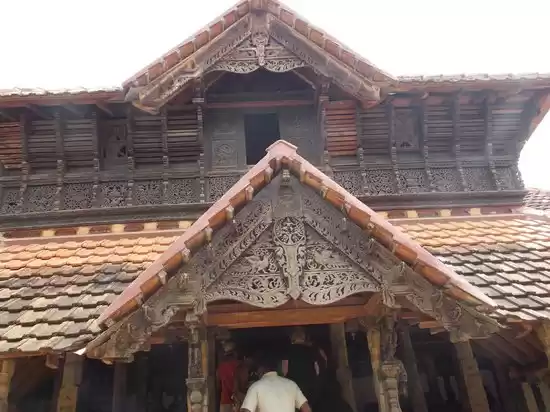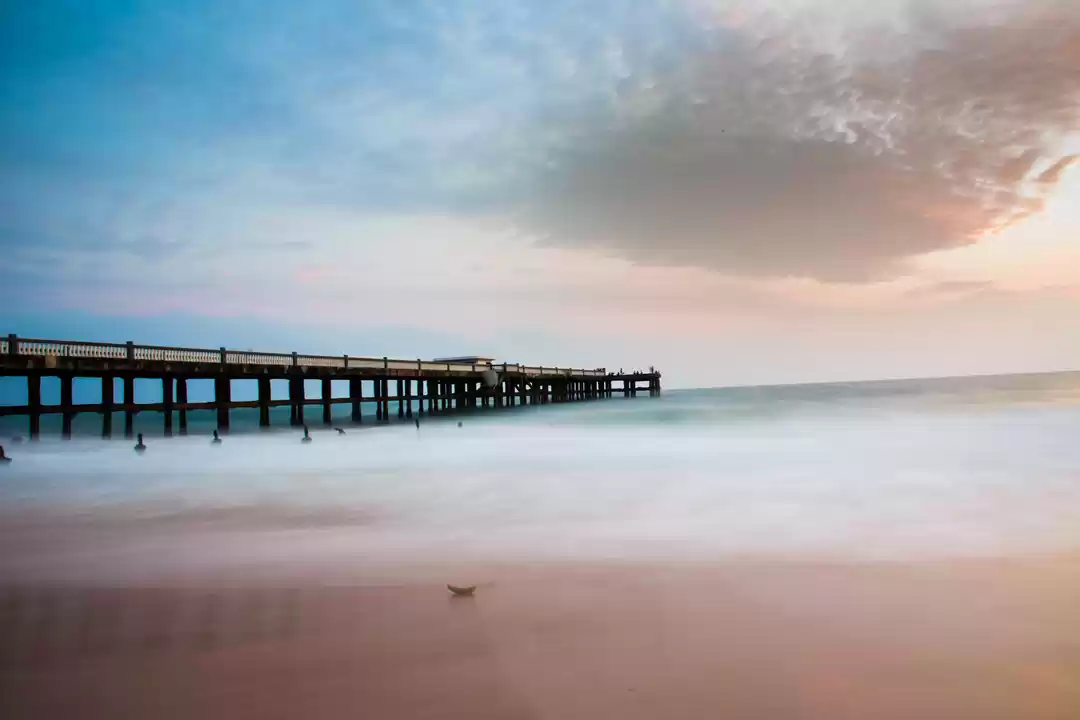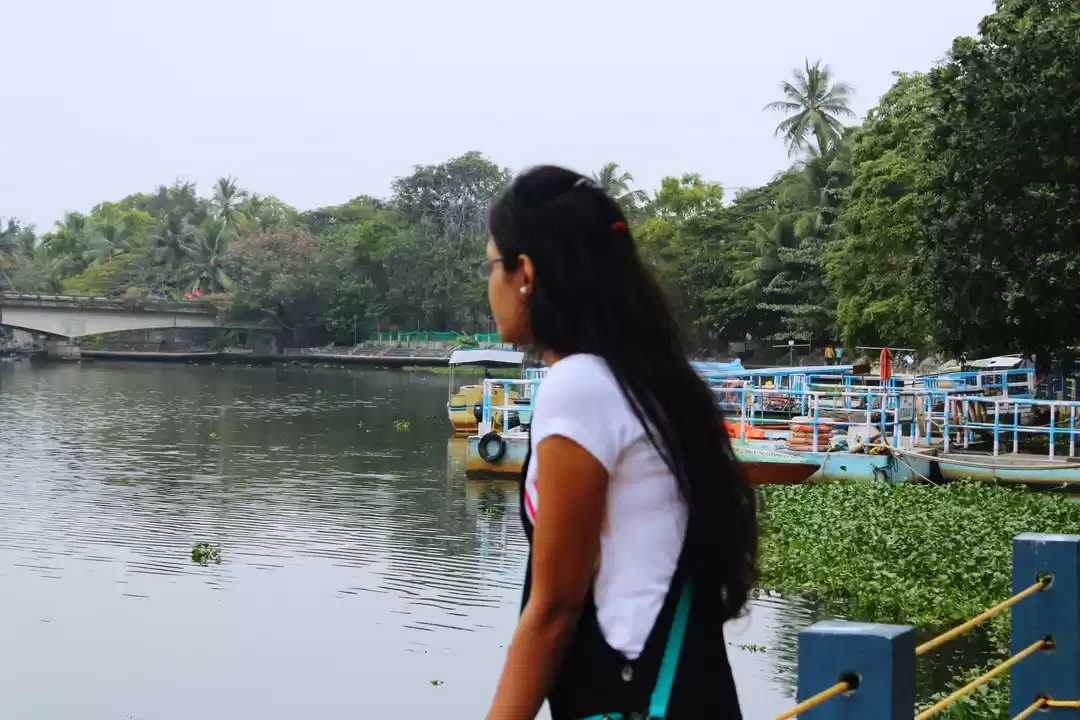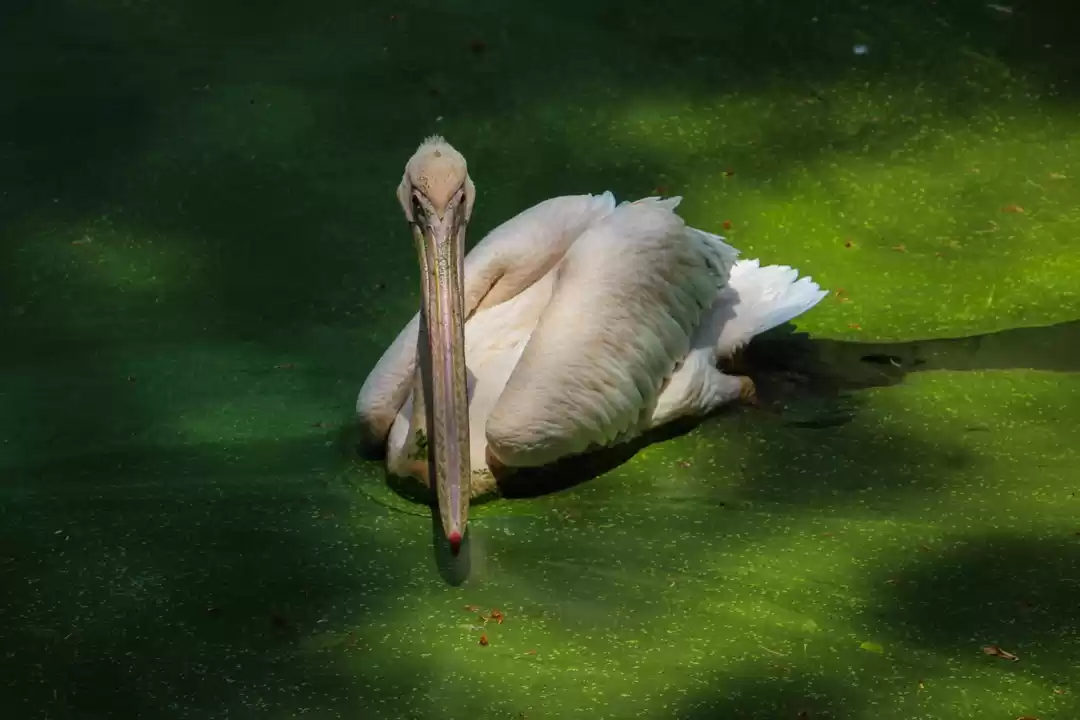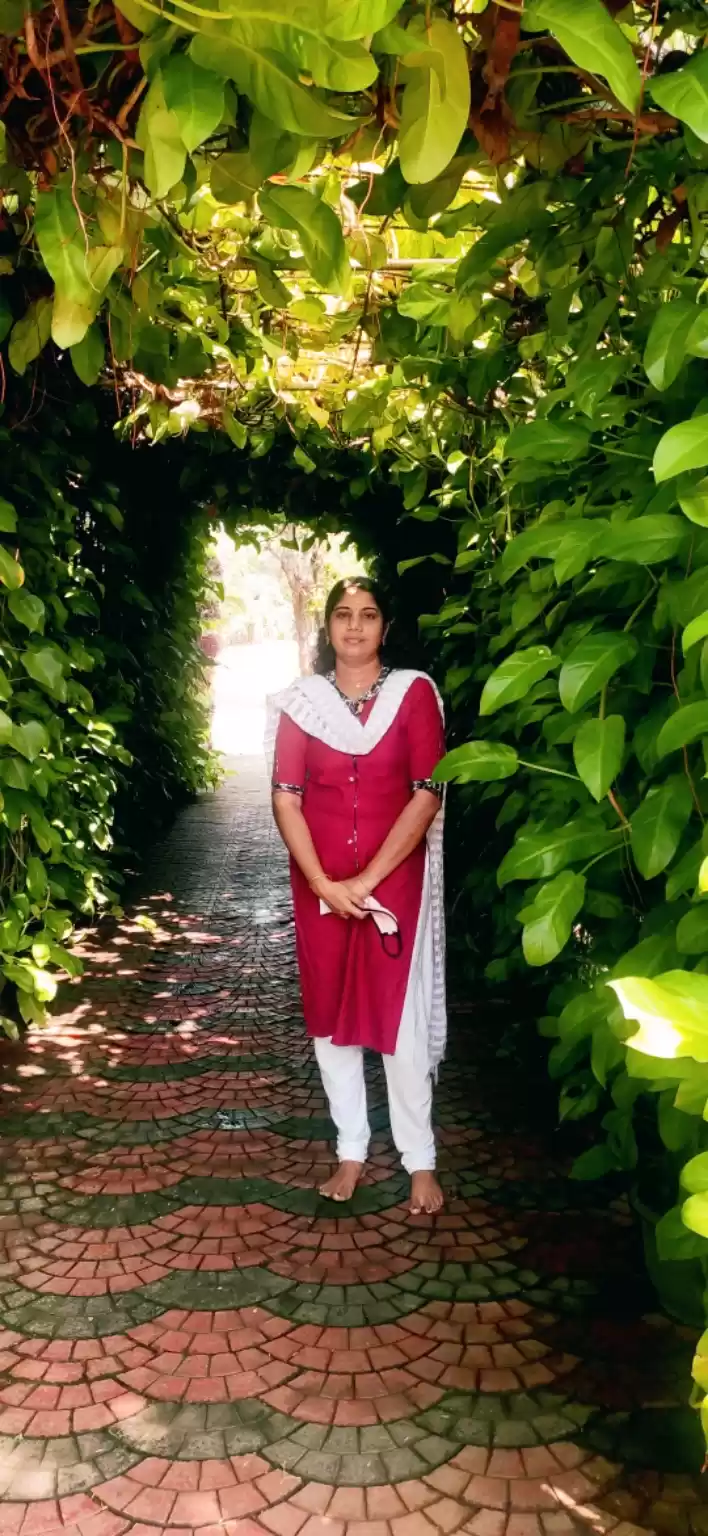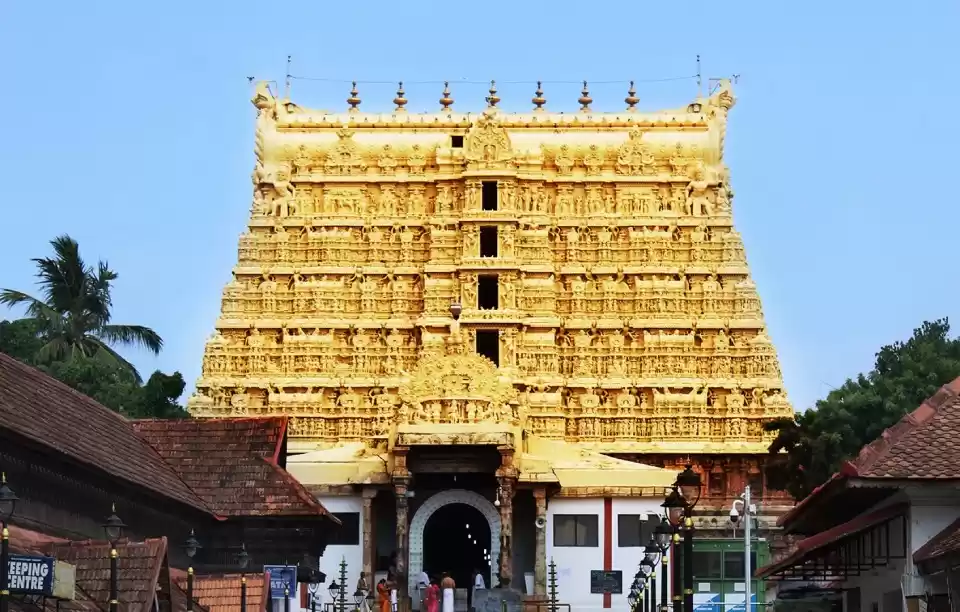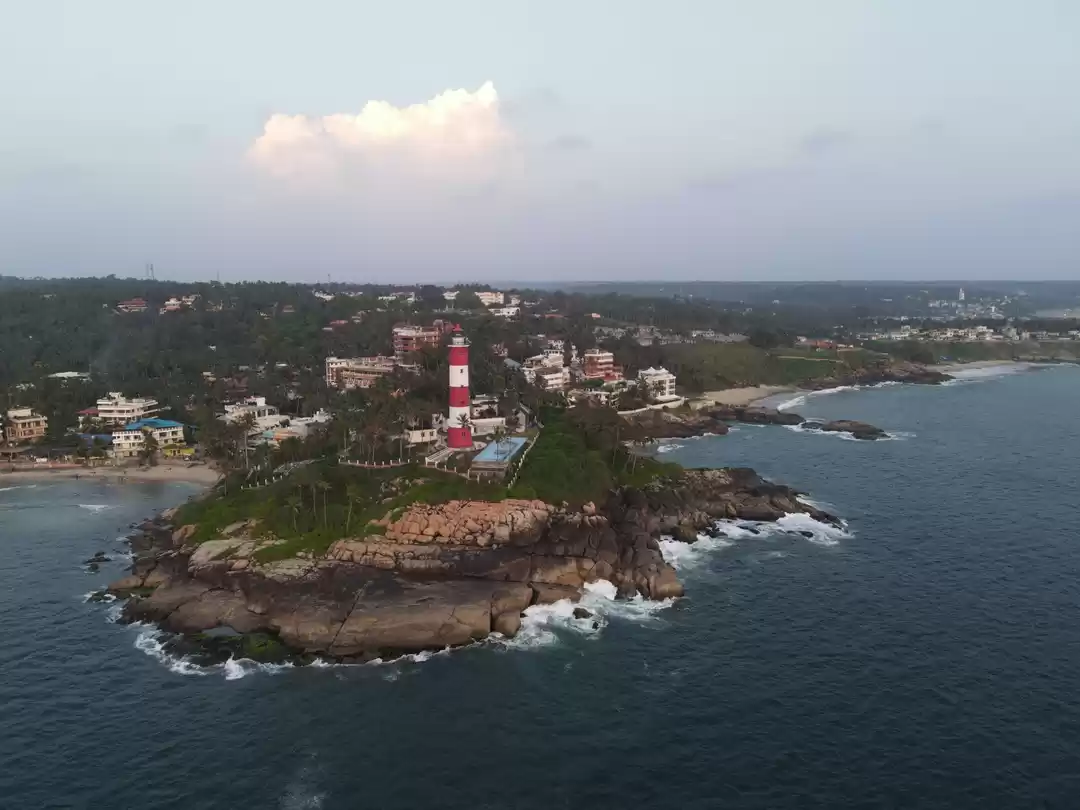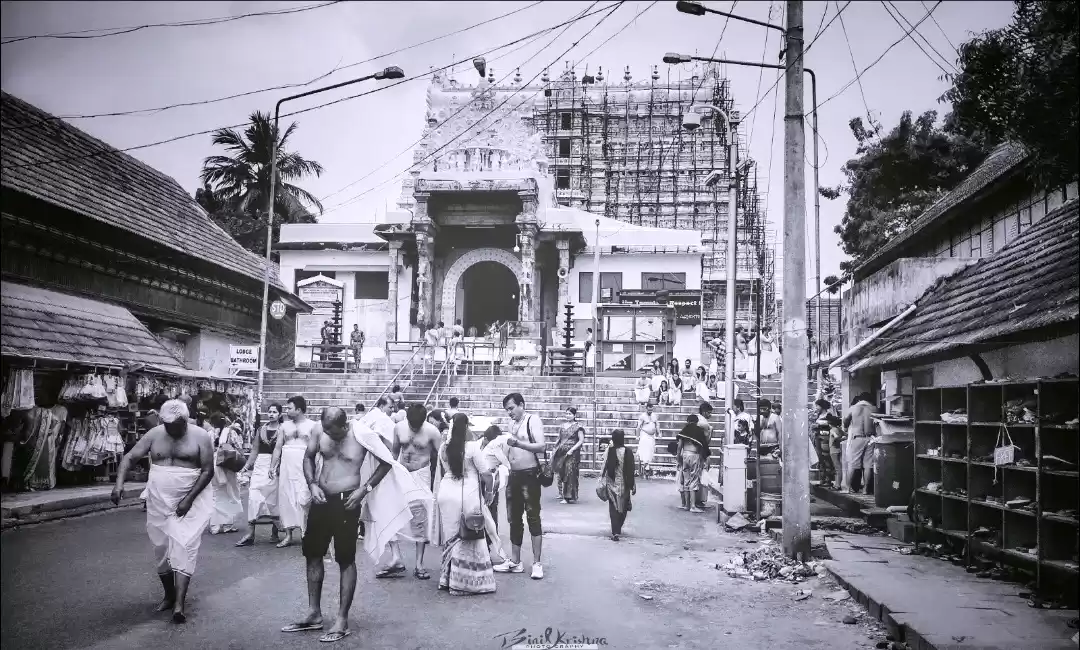Padmanabhaswamy Temple, located in Kochi, Kerala is a replica of the world-renowned Padmanabhaswamy Temple in Thiruvananthapuram, which is considered to be the richest Hindu temple in the world. It is believed to be one of the 108 sacred Vishnu temples mentioned in the works of the Tamil saints known as the Alvars.
One of the most intriguing aspects of this temple in Kochi is the hidden chambers or vaults (kallaras) that are believed to contain immense treasures, including gold, jewels, and other valuables. Visitors are drawn not only to the temple's spiritual ambiance but also to its architectural splendor and the mystique surrounding its treasures.
History and Legend of the Temple

- The Padmanabhaswamy Temple in Kochi was built by Maharaja Rama Varma XVIII in 1840.
- He wanted to replicate the idol and rituals of the Padmanabhaswamy Temple in Thiruvananthapuram.
- The idol of Lord Vishnu in Ananthasayanam posture was created with 12008 salagramams from Nepal.
- The temple follows the architectural style of the original temple, including the gopuram, mandapam, and prakaram.
- According to legend, the idol appeared in Ananthasayanam posture to sage Vilwamangalam at Ananthapura Lake Temple.
- The sage took him as his disciple but scolded him harshly one day.
- The lord then transformed into a huge idol in Thiruvananthapuram, later reduced to 18 feet in size.
Must Read: Know about these Wealthiest Temples in India
Who owns the Padmanabhaswamy Temple treasure?

The treasure is believed to have been accumulated over centuries through donations and offerings to the temple.
As of now, the Supreme Court of India has ruled that the treasure will remain under the control of the temple's administration, which is headed by the Travancore royal family. The royal family has been traditionally associated with the temple and its administration.
Architecture Of Padmanabhaswamy Temple

- The Padmanabhaswamy Temple in Kochi showcases the Kerala style of architecture, blending Dravidian and indigenous elements.
- It features a rectangular plan with a gopuram at the eastern entrance adorned with sculptures of deities and mythical creatures.
- The temple includes a balipeedam (sacrificial altar), a dipasthambham (lamp post), and a dwajasthambham (flag post) at its entrance.
- The main shrine, located on a raised platform, is accessed through three doors depicting different aspects of Lord Vishnu.
- Other shrines within the temple complex are dedicated to Lord Shiva, Lord Ganesh, Lord Ayyappa, Goddess Durga, and Goddess Saraswati.
- The temple's mandapam (hall) hosts cultural programs during festivals, while the prakaram (circumambulatory path) allows devotees to offer prayers by walking around the temple.
Customize your trip to Kochi with Kochi Tourism and Travel Guide with Tripoto
Darshan Timings of the Temple

The devotees can have a glimpse of the idol of Lord Vishnu through three different doors at different times of the day. The darshan timings are as follows:
Darshan Time: 3:30 AM to 7:30 PM (break from 12:15 PM to 4:00 PM)
Early Morning Darshan: 5:15 AM to 6:15 AM
Morning Darshan: 8:30 AM to 11:00 AM
Afternoon Aarti: 12:00 PM to 12:15 PM
Deepardhanai: 3:30 AM to 4:15 AM
Evening Darshan: 5:00 PM to 6:15 PM and 6:45 PM to 7:20 PM
The darshan timings are subject to change during festivals and special occasions. It is advisable to check the official website of the temple or contact the temple authorities before planning a visit.
Legends On Padmanabhaswamy Temple

Origin of the Temple: According to local belief, the Padmanabhaswamy Temple was consecrated by Lord Parasurama, an avatar of Lord Vishnu and the legendary founder of Kerala. It is said that he installed the idol of Lord Padmanabha in the temple.
The Legend of Divakara Muni: One of the popular legends associated with the temple is the story of Divakara Muni, a saintly king who was a great devotee of Lord Vishnu.
It is said that Lord Vishnu appeared before him in the form of a child and granted him a vision of his divine form. The king was so overwhelmed by the experience that he composed the famous "Bhadrachala Ramadasa Kriti," a devotional song praising Lord Vishnu.
The Hidden Treasures: The temple gained international attention in recent years due to the discovery of secret vaults (kallaras) containing immense treasures, including gold, jewels, and other valuables. These vaults were reportedly sealed for centuries, adding to the temple's mysterious aura.
The Curse of Ananthapadmanabha: According to a legend, the temple was once a place of worship for Jains. It is said that a group of jealous priests from another sect cursed the deity, causing the temple to be submerged in the sea.
Lord Vishnu appeared in a dream to one of his devotees and instructed him to build a new temple at a specific spot where the idol would be found. The devotee found the idol as instructed and built the temple, which stands to this day.
Must read: Explore the beauty of Kochi in 1 Day
Festivals and Celebrations at Padmanabhaswamy Temple

The Padmanabhaswamy Temple in Kochi celebrates various festivals throughout the year, which attract thousands of devotees and tourists. Some of the major festivals are:
Alpashy festival: (October-November) This is a 10-day festival celebrated in the Malayalam month of Thulam . It commemorates the installation of the idol of Lord Vishnu in the temple. It involves various rituals, such as pallivetta (royal hunt), arattu (holy bath), and utsavabali (sacrificial offering).
Panguni festival: (March-April) This is another 10-day festival celebrated in the Malayalam month of Meenam . It marks the birthday of Lord Vishnu and also coincides with the spring equinox. The festival features a procession of elephants, chariots, and palanquins carrying the idols of Lord Vishnu and other deities.
Navratri festival: (September-October) This is a 9-day festival celebrated in the Malayalam month of Kanni . It is dedicated to Goddess Durga, worshipped as the supreme power and mother of the universe. The festival involves various rituals, such as pooja, homa, and archana.
Sreebali festival: (January-February)This is a one-day festival celebrated on the Malayalam month of Makaram. It is dedicated to Lord Ayyappa, who is worshipped as the son of Lord Shiva and Lord Vishnu. The festival involves a ritual called sreebali, which means offering rice to Lord Ayyappa.
Vinayaka Chaturthi: (August - September) This festival, also known as Ganesh Chaturthi, celebrates the birth of Lord Ganesha. It is marked by the installation of Ganesha idols in homes and temples, including the Padmanabhaswamy Temple.
Janmashtami: (August) Janmashtami commemorates the birth of Lord Krishna. At the Padmanabhaswamy Temple, this festival is celebrated with special pujas and bhajans dedicated to Lord Krishna.
Vishu: (April) Vishu marks the Malayalam New Year and is celebrated with great enthusiasm at the temple. It is a day of feasting, visiting temples, and seeking blessings for the new year.
Maha Shivaratri: (February - March) Maha Shivaratri is dedicated to the worship of Lord Shiva and is celebrated with fasting, night-long vigils, and offerings of fruits and flowers at the temple.
Nearby Attractions to Visit Along with the Temple

The Padmanabhaswamy Temple in Kochi is located in a prime location that offers many nearby attractions to visit along with the temple. Some of them are:
Mattancherry Palace: Also known as the Dutch Palace, this is a historical palace that was built by the Portuguese and later renovated by the Dutch. It showcases various paintings, murals, artifacts, weapons, etc. related to the history and culture of Kerala.
Jewish Synagogue: Also known as the Paradesi Synagogue, this is the oldest active synagogue in India and one of the seven synagogues of the Malabar Yehudan community. It displays various antiques, chandeliers, scrolls, coins, etc. related to the Jewish heritage.
Fort Kochi: This is a historical area that was once a Portuguese colony and later a British settlement. It has various attractions, such as St. Francis Church, Santa Cruz Basilica, Chinese Fishing Nets, Dutch Cemetery, etc. that reflect its colonial past.
Marine Drive: This is a scenic promenade that offers a panoramic view of the Arabian Sea and the Kochi Harbour. It has various attractions, such as Rainbow Bridge, Marine Walkway, Children’s Park, etc. that provide entertainment and relaxation.
Must Read: Top 11 famous temples in India you cannot miss
Places to Stay Near Padmanabhaswamy Temple

The Haiwa Beach Residency: This is a lodge that offers cosy and elegant rooms with modern amenities. It is located just 0.1 km from the temple and has a rating of 8.9 out of 10.
Akhil Classic: This is a three-star hotel that offers comfortable and spacious rooms with free Wi-Fi and breakfast. It is located 0.7 km from the temple and has a rating of 7.7 out of 10.
Saj Luciya - A Classified 4 Star Hotel: This is a four-star hotel that offers luxurious and well-equipped rooms with air conditioning and pool access. It is located 0.4 km from the temple and has a rating of 6.8 out of 10.
Restaurants and Cafes Near the Temple

If you are feeling hungry or thirsty after visiting the Padmanabhaswamy Temple in Kochi, you will find many options for restaurants and cafes near the temple.
Villa Maya: This is a fine dining restaurant that offers authentic Kerala cuisine along with other dishes from around the world. It is located 1.2 km from the temple.
Zam Zam Restaurant: This is a casual restaurant that offers delicious biryanis, kebabs, curries, and other dishes from the Mughlai and Arabian cuisine. It is located 0.4 km from the temple.
Ariya Niwas Restaurant: This is a vegetarian restaurant that offers tasty and healthy dishes from the South Indian cuisine. It is located 0.7 km from the temple.
Mother’s Veg Plaza: This is another vegetarian restaurant that offers a variety of dishes from the North Indian, Chinese, and Continental cuisine. It is located 0.8 km from the temple
Garden Grille Restaurant: This is a restaurant that offers buffet and a la carte options from the Indian, Chinese, and Continental cuisine. It is located 1 km from the temple.
Best Time To Visit Padmanabhaswamy Temple

The best times of year to visit Padmanabhaswamy Temple in Kochi are during the months of October to March.
This period coincides with the winter and early spring seasons in Kerala, characterized by cooler temperatures and lower humidity levels, making it more comfortable for sightseeing and temple visits.
It is advisable to avoid the monsoon season (June to September) due to heavy rains, which can disrupt travel plans and temple visits.
How To Reach Padmanabhaswamy Temple

By Air: The nearest airport is the Cochin International Airport, located about 34 kilometers away from the temple. From the airport, you can hire a taxi or use public transport to reach the temple.
By Train: The nearest major railway station is the Ernakulam Junction Railway Station, located about 12 kilometers away. From the railway station, you can take a taxi or use public transport to reach the temple.
By Road: The temple i well-connected by road. You can take a bus or hire a taxi from any part of Kochi to reach the temple. The temple is located near the Ernakulam Shiva Temple bus stop.
By Boat: You can also reach the temple by taking a boat from various parts of Kochi. The temple is located near the Fort Kochi boat jetty.
Tips For Visitng Padmanabhaswamy Temple

- The Padmanabhaswamy Temple in Kochi follows a strict dress code and rules for visiting the temple premises. Only Hindus are allowed to enter the temple.
- Men have to wear dhoti or mundu (traditional white cloth) with bare chest or angavastram (upper cloth). They are not allowed to wear trousers, jeans, shorts, shirts, t-shirts, etc.
- Women have to wear saree or salwar kameez (traditional dress) with blouse or dupatta (scarf).
- These clothes can be rented or bought from nearby shops if needed.
- No photography, videography, mobile phones, footwear, bags, etc. are allowed inside the temple.
- No smoking, drinking, eating, chewing, etc. are allowed inside the temple.
- No touching or leaning on the walls or pillars of the temple



























